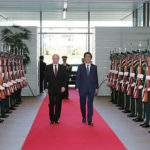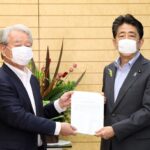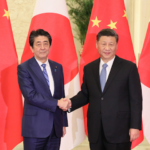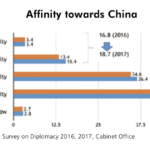The second Trump administration has implemented a series of protectionist policies, including America First and reciprocal tariffs.
“Derisking” where it concerns Japan’s foreign affairs typically refers to Japan’s efforts to maintain economic relations with China while reducing excessive reliance on it in the supply chain and preventing the outflow of cutting-edge technology. It may be time for Japan to consider derisking from the Trump administration.
While the Japan-US alliance is important, Japan should continue to pursue free trade and distance itself from the Trump administration’s protectionist policies. China is taking advantage of the Trump administration’s protectionism to promote itself as a leader in free trade and incorporate the Global South. To distinguish itself from China, Japan should become a standard-bearer for the rule of law and free trade alongside the EU and others.
Negotiations between Japan and the US regarding tariffs began on April 18, 2025, and are ongoing. The Trump administration imposed high tariffs on Japan, including a base 10% tariff, a reciprocal 24% tariff, and tariffs of 25% each on steel, aluminum, and automobiles. These tariffs run completely counter to the trends of globalization and free trade.
Trump first introduced barriers to global free trade in January 2017, shortly after his first inauguration. This marked the beginning of the US’s withdrawal from the proposed Trans-Pacific Partnership Agreement (TPP), which it signed in February of the previous year along with Australia, Brunei, Canada, Chile, Japan, Malaysia, Mexico, New Zealand, Peru, Singapore, and Vietnam.
The TPP was characterized by broad, transparent rules that ensured a free and fair competitive environment. However, the Trump administration turned its back on this framework.
Japan has led the effort to maintain the TPP framework following the withdrawal of the United States. In January 2018, 11 countries, excluding the United States, negotiated a revised TPP called the Comprehensive and Progressive Agreement for the Trans-Pacific Partnership (CPTPP, also known as TPP11). The agreement was signed in March 2018 and took effect in December that year.
Based on the assumption that the United States would one day return to the agreement, about two-thirds of the TPP’s provisions were carried over to the CPTPP. Its main features are as follows:
The CPTPP will ultimately eliminate or significantly reduce tariffs on more than 99% of traded goods between participating countries. In addition to trade in goods, the CPTPP covers the liberalization of trade in services, such as finance, communications, and transportation, as well as investment. Additionally, the CPTPP includes rules in new fields, such as intellectual property rights, labor standards, environmental protection, and electronic commerce. Notably, it includes provisions regarding the liberalization of data distribution and restrictions on excessive subsidies to state-owned enterprises.
By establishing a wide range of highly transparent rules, this FTA ensures a free and fair competitive environment, and compared to previous agreements, the depth and breadth of economic cooperation is much greater, making it a new type of free trade agreement for the modern era.
The UK joined the CPTPP in December 2024. Costa Rica is currently negotiating membership. China, Taiwan, Ecuador, Uruguay, Ukraine, and Indonesia have officially applied to join.
Other frameworks starting in 2017
In July 2017, Japan and the EU signed the “Strategic Partnership Agreement (SPA)” and the “Economic Partnership Agreement (EPA).” These agreements stipulate a comprehensive cooperative relationship between Japan and the EU. The SPA took effect in February 2019, as did the Japan-EU EPA.
This EPA is an advanced agreement that eliminates approximately 99% of the EU’s tariffs and about 94% of Japan’s tariffs (on a product-number basis), significantly improving market access for both sides. The conclusion of the Japan-EU EPA was driven by a shared recognition between Japan and the EU regarding issues like protectionist movements and market-distorting measures by emerging economies (e.g., industrial subsidies and mandated technology transfers). Japan and the EU also shared an understanding of the need to reform the stalled WTO Doha Round.
The Japan-EU SPA officially entered into force in January 2025. Its main provisions are as follows:
This agreement establishes a legal basis for Japan, the EU, and the EU member states to promote cooperation on issues of common interest, including a wide range of global challenges. These states share universal values and principles, such as democracy, the rule of law, human rights, and freedom. The agreement also strengthens their future strategic partnership. The diverse areas covered include promoting peace and security, preventing the proliferation and disarming weapons of mass destruction, controlling the transfer of conventional arms, counterterrorism, United Nations reform, science and technology, space, the environment, the oceans, cyberspace, and people-to-people and cultural exchanges.
Former Prime Minister Abe Shinzo, who led the EPA and SPA, commented in his keynote speech at the Europa Connectivity Forum held in Brussels on September 27, 2019, that “Our EPA made Japan and the EU flag bearers of free trade, while our SPA made us the guardians of universal values” (“Japan and the EU: The Strong and Steady Pillars Supporting Many Bridges”).
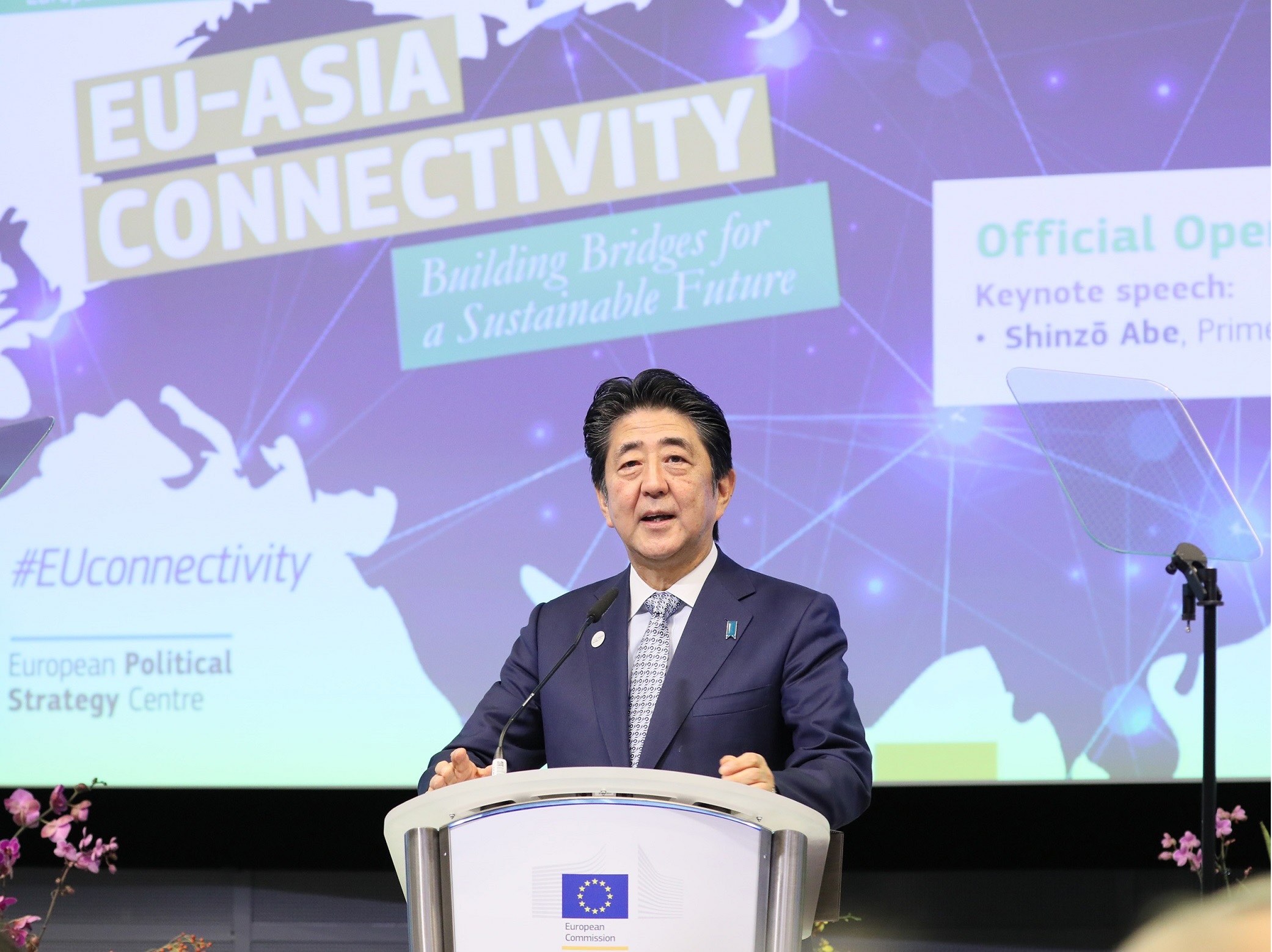
“Our EPA made Japan and the EU flag bearers of free trade, while our SPA made us the guardians of universal values.” Former Prime Minister Abe Shinzo delivers his keynote speech at the Europa Connectivity Forum in Brussels, September 27, 2019. PHOTO: CABINET PUBLIC AFFAIRS OFFICE
Japan and the UK
In addition, we must not forget the progress being made in Japan-UK relations. The UK left the EU on February 1, 2020, which meant its withdrawal from the Japan-EU EPA as well.
On the day that the UK’s withdrawal from the EU was decided, then Foreign Minister Motegi Toshimitsu made the following statement:
“For Japan, the UK and the EU are global and strategic partners which share fundamental values such as freedom, democracy, market economy, human rights, and the rule of law.
“As the leaders of Japan and the UK have confirmed, the Government of Japan will work promptly with the Government of the UK after the country’s withdrawal from the EU in order to establish a new economic partnership between the two countries based on the Japan-EU Economic Partnership Agreement (EPA). Japan remains committed to strengthening Japan-UK relations not only in economic relations, but also in wide-ranging areas including security and defense, and culture.”
Japan-UK Comprehensive EPA
Negotiations for the Japan-UK Comprehensive Economic Partnership Agreement began on June 9, 2020. An agreement in principle was reached on September 11 of that year during a video conference between Foreign Minister Motegi and UK International Trade Secretary Elizabeth Truss.
Foreign Minister Motegi said the following about the contents of the agreement.
“I believe it will be possible to continue the benefits received by Japan under the Japan-EU EPA and ensure the continuity of business of Japanese companies in the United Kingdom. In addition, we agreed on more advanced, high-level rules than the Japan-EU EPA, including on e-commerce, so it is expected that this will lead to further promotion of trade and investment between Japan and the United Kingdom.”
Following the CPTPP, the Japan-EU EPA, and the Japan-US Trade Agreement, Japan has led the promotion of a free and fair trade system and achieved this result.
The Japan-UK Comprehensive EPA was subsequently signed on October 23, 2020, and came into force on January 1, 2021.
UK’s accession to the CPTPP and future prospects
Furthermore, the UK’s aforementioned accession to the CPTPP is also noteworthy. Although the UK first expressed its intention to join the CPTPP in April 2020, it was not officially decided until December 2024.
Consequently, the CPTPP’s total GDP will grow from 12% ($11.8 trillion) to 15% ($14.7 trillion) of the global GDP, nearly reaching the EU’s $17 trillion.
For the UK, CPTPP membership will enable coordinated efforts to strengthen cooperation with member countries by participating in a low-tariff, high-standard international trade agreement in the Asia-Pacific region. As the US takes a protectionist stance, countries seeking to expand free trade including the UK, EU and Japan, must collaborate to establish a framework for renewing the WTO agreement.
The postwar international order, for example, did not come into being naturally. It can be said that it still exists today under the leadership of the United States. However, Trump is trying to turn his back on the international community in his second term, just as he did in his first. If the Trump administration does not try to exercise this leadership, it could lead to further multipolarization of the world.
Japan does not have the power or will to seize global hegemony. Nevertheless, Japan must cooperate with the EU, the UK, and other countries in Europe, Asia, and Oceania, as well as with international cooperation frameworks, to lead the world through diplomatic cooperation, promoting common interests, systems, and international order.
Japan-EU Competitiveness Alliance
According to Kyodo News, amid growing concerns over former President Trump’s tariff measures and China’s trade practices, Japan and the EU are preparing to launch the Japan-EU Competitiveness Alliance at the Japan-EU Summit in July 2025. This framework aims to strengthen corporate competitiveness by promoting trade and economic security cooperation.
The two economies, which together account for approximately 30% of the world’s GDP, have already eliminated tariffs and other trade barriers through the Japan-EU Economic Partnership Agreement (EPA). They will use this agreement as a foundation to further coordinate their efforts to maintain a rules-based economic order. Regarding trade, the two sides will work to reform the WTO, which they consider dysfunctional. They will also seek to cooperate with emerging and developing countries in the Global South that share their values regarding free and fair trade and the rule of law.
The EU is eager to cooperate with the CPTPP. As the CPTPP considers improving the business environment for digital trade and climate change measures, some within the EU are calling for cooperation in rule-making. Some believe that the EU will consider joining the CPTPP if the Trump administration does not support the global liberal system.
It is unclear whether the Japan-US tariff negotiations will conclude before or after the Japan-EU summit. In any case, however, Japan will have no choice but to continue its efforts to create and implement an even more important framework within the multi-layered framework.
Japan’s role as a standard-bearer for free trade, which it has played a leading role in thus far, is becoming even more important amid rapid changes in the international situation. This is a time when Japan’s diplomatic skills will be put to the test as it deepens cooperation with the EU, the UK, and CPTPP member states to build an international economic order based on common values.
Mizuno Tetsu is a freelance journalist.

